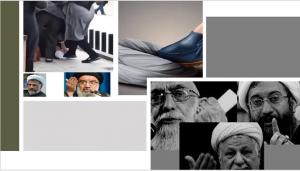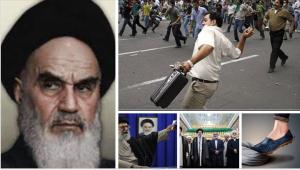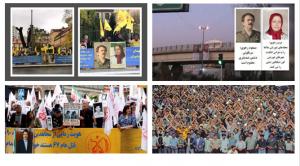Ruhollah Khomeini, the former supreme leader of the clerical regime. He made it clear that the obligation to uphold clerical rule meant that religion and state must be permanently inseparable.

Even from within the clerical regime, there are calls that indicate a deep rift within the ruling regime. The practical need for the separation of religion and state, primarily for fear of a popular uprising.

According to one of the officials, in a separate TV interview, he explained that there is a “trend in governance that we can interpret as a secular trend, which is very dangerous and alarming.”
Public calls for a secular and democratic Iran are growing. They become so loud that even regime officials can no longer ignore them.
— NCRI
PARIS, FRANCE, January 21, 2022 /EINPresswire.com/ — An article that appeared on the NCRI Foreign Affairs Committee website, stated: After seizing power in Iran in 1979, Ruhollah Khomeini, the former supreme leader of the clerical regime, emphasized that “the preservation of the state is one of the most important religious and intellectual duties”.
He made it clear that the obligation to uphold spiritual rule means that religion and state must be inseparable in the long run. (In the same book) Khomeini said: “Those who want to give up politics are practically ready to give up Islam.”
During the reigns of Khomeini and his successor, Ali Khamenei, calls for the separation of religion and state were considered anathema. The mullahs know that such a separation, advocated around the world at least since the Age of Enlightenment, will ultimately hasten the impending collapse of the regime.
But today there are calls from even the clerical regime that indicate a deep rift in the ruling establishment. This conflict shows the emergence of new tendencies that recognize the practical necessity of separating religion and state, largely because of fears of a popular uprising.
According to the official IRNA news agency, Interior Minister and head of the Social Affairs Organization Taghi Rostamvandi said on January 16 that “various indicators show that the desire for fundamental changes in the country is increasing.”
In a separate television interview, he explained that there is a “trend in governance that we can interpret as a secular trend, which is very dangerous and alarming.”
Hosseini Bushehri, chairman of the Qom Teachers’ Association, also warned on state television on January 24: “Some clerics should be warned against forming alliances with others… They deny their roots and claim that religion must be separated from politics!”
Mohammad Ali al-Hashem, the Supreme Leader’s representative in East Azerbaijan, also spoke of a “deviation within the system” during his Friday prayer sermon and of a “scourge called promoting the idea of separation of religion and politics, which is a plague.” threatens the system”.
Ahmad Khatami, an extremist cleric close to Khamenei, warned in Tehran on January 23: “Some seminarians and religious authorities are talking about separating religion from politics and they are pointing in the wrong direction!”
Mohammad Taghi Fazel Meybodi, a member of the Assembly of Researchers and Teachers of the Qom Seminary, said on January 4: “Many young clergymen do not have a positive view of clergymen entering the realm of government and do not want clergymen to enter Politics.”
The emerging trend that, according to Khomeini, is leading to the denial of the entire clerical system is no coincidence. Rather, it is the result of a fascist regime’s imprisonment in major crises that it helped create.
These crises have accelerated the emergence of threatened uprisings against the regime.
Jafar Sobhani, a senior cleric in Qom, said on January 15: “Some scholars are considering leaving the seminary, which must be taken seriously.”
“Young clerics say people are cursing us,” Hassan Rahimpour Azghadi, a former IRGC commander and extremist theorist, said on January 15.
Mohammadreza Zaeri, another cleric who works for state television, said: “People spit at me,” “hurled severe insults,” and “a taxi driver refused to take me because he said he didn’t want a cleric as a passenger.” .
Public calls for a secular and democratic Iran are growing. They become so loud that even regime officials can no longer ignore them. The whispers of “separation of religion from a state” within the ruling establishment itself have become so blatant that Khamenei has been forced to warn of “division” and “confrontation” within the system.
This rift will further undermine and weaken the clerical regime, making it more fragile and vulnerable to a disillusioned populace emboldened by an organized and increasingly powerful resistance movement
Shahin Gobadi
NCRI
+33 6 51 65 32 31
email us here
2018 began in Iran with a nationwide uprising that lasted about two weeks and covered all 31 provinces of Iran and spread to more than 142 cities.
![]()



